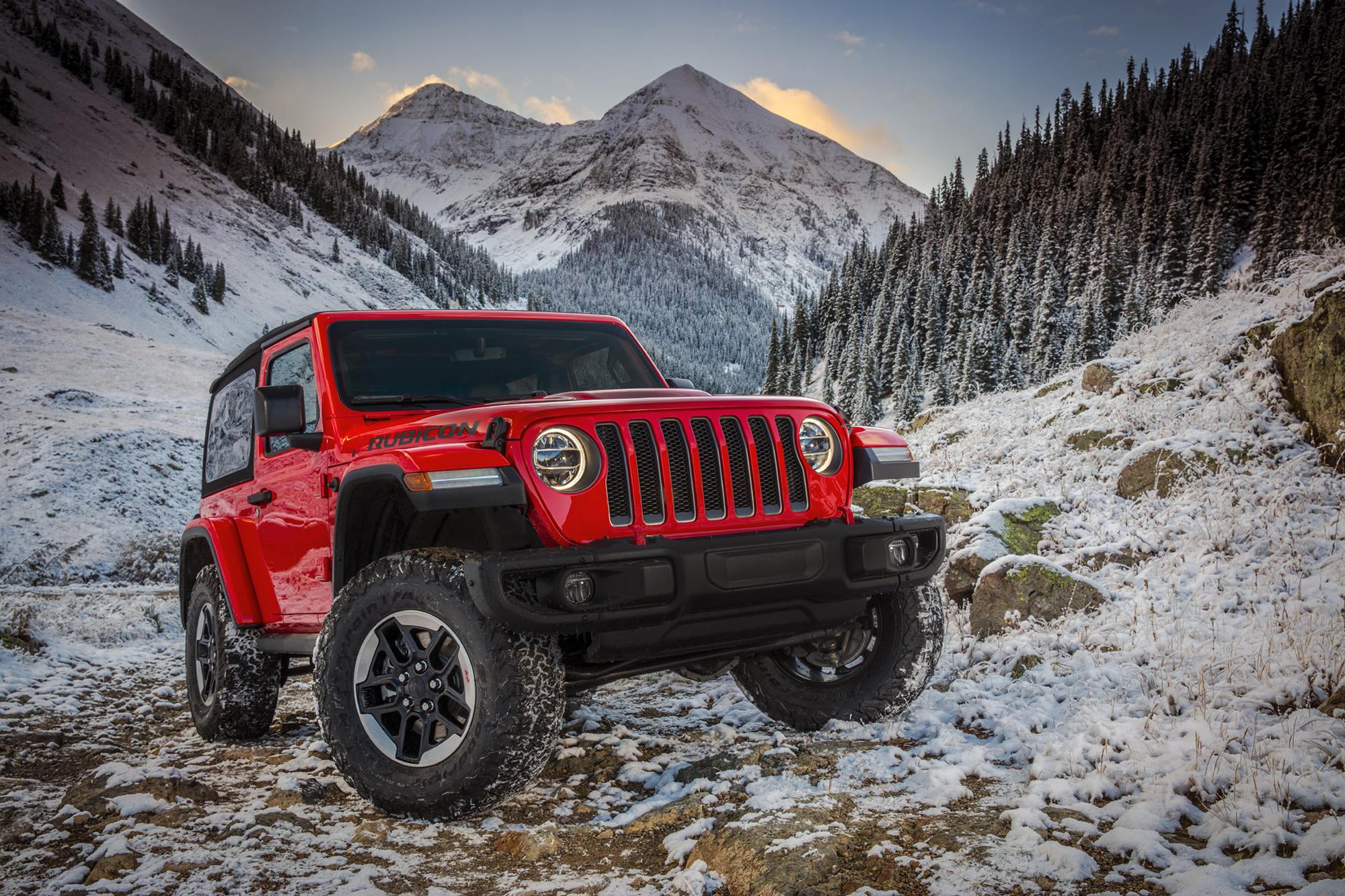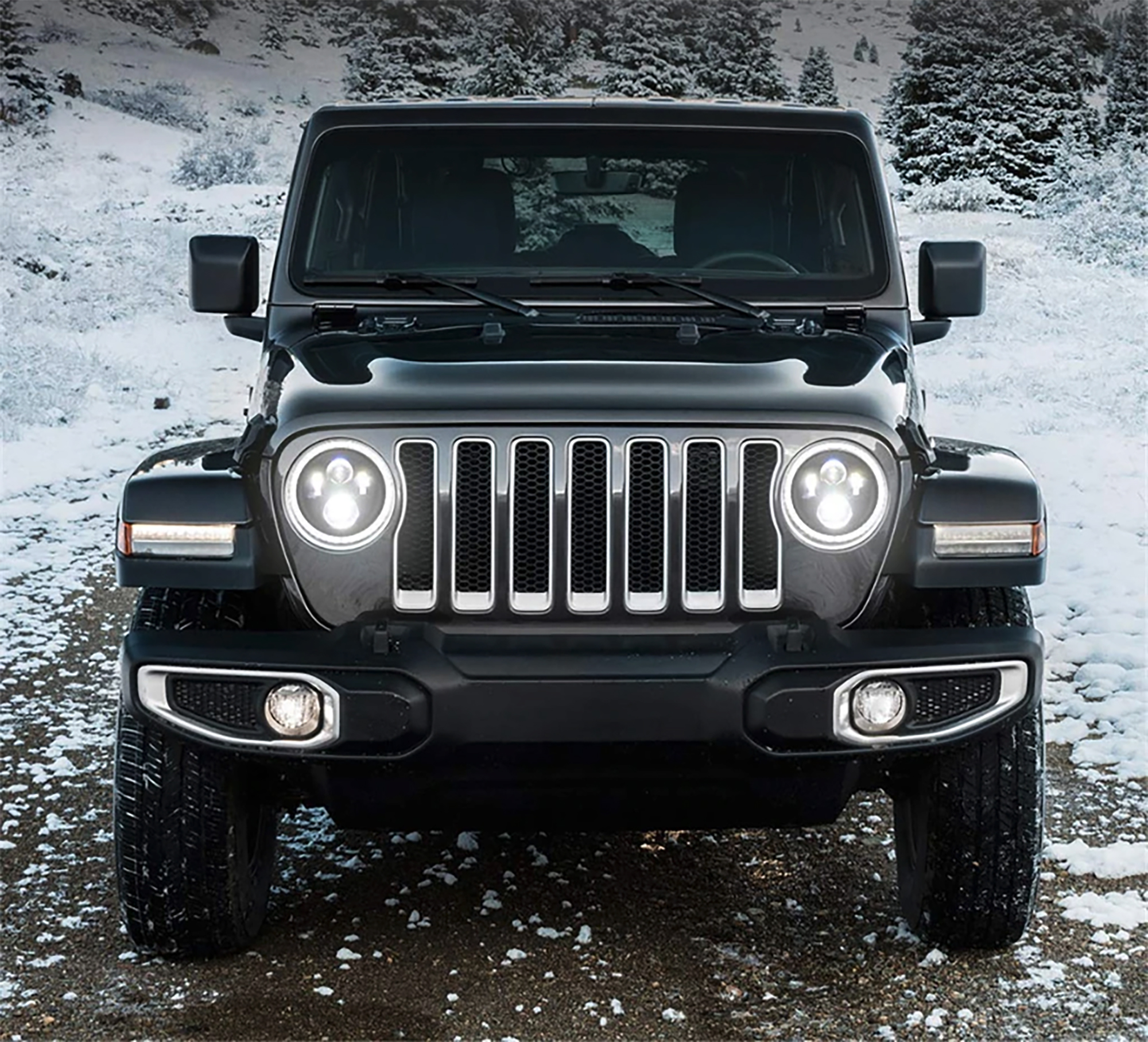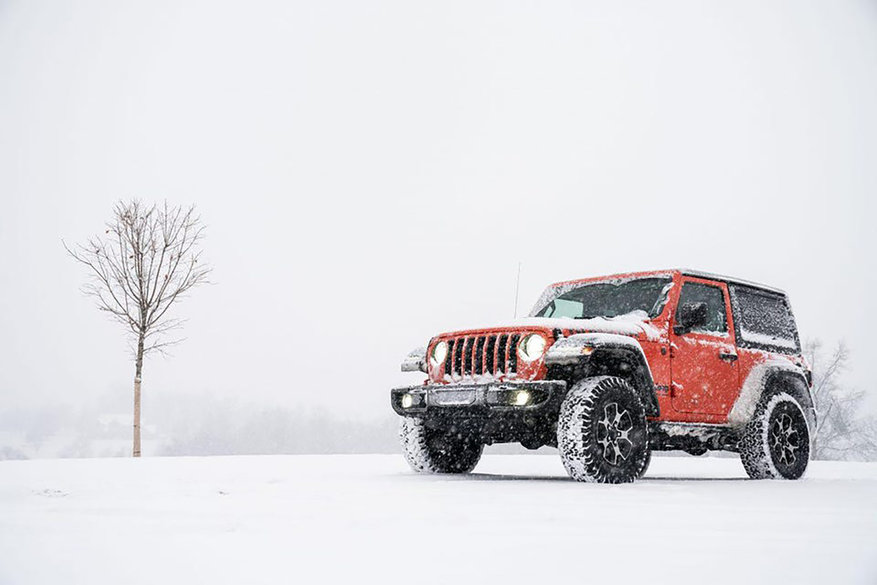by Matt Konkle
Managing Editor
They impressively tool around in commercials, ascending hills as if they are being pulled by some invisible force, while gliding over mud, water and rocks like the things were simply speed bumps. Because in a commercial, a Jeep can do anything.
Commercials are, well, commercials, but anyone who has actually traversed adverse conditions in their Jeep, whether that’s road or trail stuff, quickly realizes the vehicle’s rugged capability.
Any yet, when the snow starts to fly and accumulate, that nagging question always comes back around — just how good is a Jeep in the snow?
Short answer; very good.
Longer answer; with better ground clearance than most other vehicles, along with a body built for off-road driving, and a four-wheel-drive system, a Jeep more than holds its own in the snow.
One thing to keep in mind as a Jeep owner, no matter how many modifications you make on the vehicle, it is not going to stop any faster on ice, or thoroughly packed down snow. Sure, four-wheel-drive is great, but it doesn’t invalidate physics so always leave yourself plenty of stopping distance in icy conditions even with that four-wheel-drive system engaged.
Now, you can talk about traction, ground clearance or any other number of safety features a Jeep may offer to better handle snow and winter weather, but none of that matters if you are not comfortable in the cabin. And you may think, especially if this is your first winter with a Jeep and a soft top, that the interior may not be very inviting when the temperature plummets.
Think again though.
A Jeep’s interior temperature can be set pretty much exactly how you want in these colder months. That’s because a Jeep’s heater tends to be a bit more powerful than the average car, so it can quickly belt out plenty of hot air to keep you comfortable even with a soft top on the Jeep. Plus, many of the newer models arrive with remote start, as well as heated seat and steering wheel options so you can have a toasty cabin all set before you even step inside.
Moving on from the interior to ground clearance, and yes, it is not a mirage — that Jeep does sit higher than the average vehicle. In fact, the stock ground clearance on a Wrangler these days is right about 10 inches (9.7 for Sport and Sahara, 10.8 for Rubicon) which means your Jeep can handle deeper snow better than most other vehicles without having a problem.
But what good is ground clearance without traction, right? And, yes, your Jeep’s four-wheel-drive system can provide plenty of traction. If you’re not familiar with that system, you can learn more about How and Why to Engage Your Jeep's Four Wheel Drive so you’ll have plenty of knowledge before hitting the snowy roads.
Basically, shifting into four-wheel drive — whether high or low range — will split the power to all four wheels, propelling them forward at the axles by the engine via the transmission and transfer case. That way, if one tire loses traction, there is still power to the other tires to keep pushing forward, ensuring superior traction in slippery or uneven terrain.
Your driving conditions and vehicle speed will usually dictate which one to use, and you can roughly think of it as four-high for higher speed, and four-low for low speed crawling in more difficult environments.
Besides that four-wheel-drive system, you may have a Rubicon Wrangler which comes stock with a locking differential system. While this does not provide any extra speed, it deftly provides extra traction when needed as the system can lock the front or back wheels (or both) so that none spin freely, thus giving you superior traction in poor conditions.
Even if you have a Sport or Sahara, you may have purchased the vehicle with a limited-slip differential upgrade. This basically limits power to a wheel that is ‘slipping’ while providing more torque to a wheel with the most traction. Even if your vehicle is a standard ‘open’ differential, there are plenty of aftermarket
Staying on the traction theme, your Jeep arrived from the factory with one of a number of tire options. Over the years, most Sport and Sahara editions, unless part of a separate package, came with ‘street’ type tires that are all-season radials. These are similar to what many cars utilize and are not the best for off-road use, but do well for most street driving in a multitude of conditions.
Rubicon edition Wranglers usually arrive with a better tread all-terrain type tire that utilizes deeper grooves for superior traction on- and off-road.

While factory tires do an average, to above average, job in winter conditions, there are plenty of aftermarket tire options to help conquer the season — especially if your current tires sport a tread that is substantially worn.
Aftermarket all-terrain tires come in a variety of sizes and widths designed to fit most Jeeps, and offer plenty of tread designs engineered to chew through snow and provide plenty of road-hugging traction.
Again, though, as noted before, ice and severely packed snow do not care what type of tire you use, so make sure to understand what kind of driving conditions are out there at all times and adjust your speed accordingly.
Besides traction, visibility is also extremely important during the winter driving months and, luckily, your Jeep provides plenty of lighting options to increase that visibility.
Now, in most cases, a Jeep comes from the factory with standard halogen lighting in the headlights and fog lights. And while these do an adequate job in night and inclement weather conditions, the increasing affordability of more powerful LED lighting makes it an almost required modification.

LED lights throw a brighter, more accurate and deeper beam, and are actually more efficient in colder weather because they do not require, or emit, heat while working. With halogen lights, higher heat produced while operating can reduce voltage flow and reduce light output. Thus, LED headlights and fog lights will continue to emit a strong light output no matter the condition, giving you plenty of visibility in snowy conditions.
The real issue with LED lights, as opposed to halogen, is again related to heat. Because these lights do not produce any heat, if you are driving in heavy snow, or slushy conditions, that stuff can stick to the headlights (or fog lights) and will not melt away.
It is not a very common issue and this can be mitigated by sprays or waxes on those respected lenses. Or, many LED lights these days come with a heated option designed to erase snow, ice, or slush on the lens before it becomes a problem

Finally, you may have never really noticed the difference before, but your Jeep’s mirrors are substantially larger than the average car. And while this does not automatically result in better winter driving, that extra viewing area does allow you better visibility in most conditions — especially on the passenger side — so you’ll always know what kind of obstacles are around you before they become an issue.
Plus, many mirrors these days do have a heated element that you can toggle on when needed so that any frozen precipitation just melts right off the glass.





















